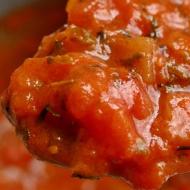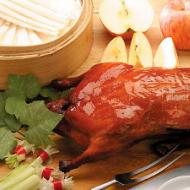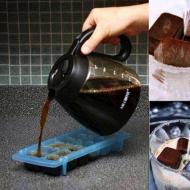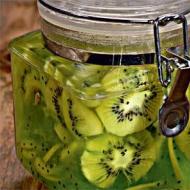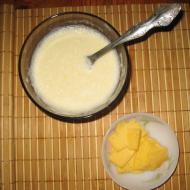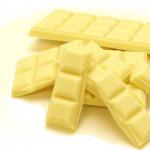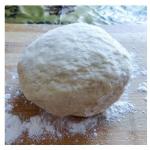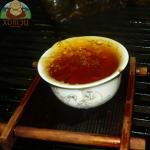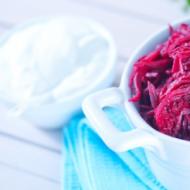
Stew at home. How to cook stew at home. Homemade minced pork stew
Canned food has a rich history. After all, the first attempts to preserve food for longer storage were used already in the time of Tutankhamun: archaeologists found an analogue of modern canned food during excavations. Naturally, the development of canning has significantly expanded the capabilities of people. For example, it has become possible to go on long hikes without the threat of spoiling your health from malnutrition. In most cases, you buy ready-made stew. However, such a product (and it will be much tastier and healthier) can be prepared independently.
Making homemade beef stew
Photo by Shutterstock
Homemade stew is a guarantee that natural meat was used in the preparation of canned food. This means that such a dish will be both healthy and nutritious. At the same time, its big advantage is that you don’t need a large amount of ingredients to prepare beef stew yourself.
Homemade beef stew recipe
Before you start cooking stew, you need to choose the right meat. After all, not every part of a cow carcass can be fully preserved. It is best to choose the sirloin part. As an option, you can stop at already chopped preparations, such as azu or goulash. But it is not recommended to take veal: despite the fact that it is considered more dietary and tender, it is noticeably inferior in taste to beef.
Naturally, we are not talking about using frozen meat to prepare stew. Firstly, such meat may be old and dry. Secondly, frozen beef no longer has the desired taste.
Remember that during the cooking process the meat is boiled down by 40%. Therefore, take more of it than you need for ready-made stew. It is also necessary to prepare lard in advance, which you will use to pour the finished stew so that it can be stored better.
To prepare homemade stew you will need:
- beef – 1 kg
- pork lard – 200 g
- bay leaf – 10 pcs.
- spices
- peppercorns to taste
Wash the meat, dry it well and cut into large pieces. Cut the lard into small cubes. Salt and pepper the meat and sprinkle with spices. Next, take a jar (it is best to use half-liter and liter jars). Place a few bay leaves on the bottom, then add the meat. Top the structure with lard and peppercorns, as well as the remaining bay leaves.
Remember that the jar must be sterile. Therefore, before you start putting food into it, be sure to sterilize the container. In addition, it is advisable to additionally lubricate the lid with fat so that it does not oxidize.
Cover with foil so that if excess juice appears from the meat, it does not splash in all directions throughout the oven and does not smoke. Then place the jar in a cold oven and turn it on to warm up to a temperature of 180 degrees. When you realize that the oven has warmed up well, reduce the temperature to 160 degrees and leave to simmer for 3 hours. Try not to open the door at this time so that the jar does not burst due to temperature changes. After the time has passed, turn off the oven, but do not open the door and do not remove the stew until it has cooled. When you remove it from the oven, roll up the lid and store it in a cool place, such as a cellar.
You can cook beef stew in another way. To do this, just boil the meat. And doing this is not as difficult as it seems.
Stew is meat that is made by stewing. That is, it is canned stewed meat. This is a finished product, so when dishes are prepared, it is added at the very end. The stew can be stored for years and still retain its nutritional value. It is prepared from poultry, rabbit, lamb, beef and pork.
Stew cooking technology
To make beef stew, it is better to buy beef in large pieces (fillet). Chopped meat - goulash or azu - is also suitable. Although veal is considered a dietary product, it is clearly inferior to beef in terms of protein content and taste. It is highly undesirable to purchase frozen meat. In order for the stew to be stored for as long as possible, it must be filled with fat. Beef itself does not have that much fat, so they use fat of a different origin, for example, pig lard. During cooking, beef meat is reduced by 40%. If you are preparing pork stew, then you can trim off the fat from the purchased meat, and at the end of cooking, simply melt it and pour over the stew. The container needs to be sterile - it must be boiled and dried. If you are going to store it for long-term storage, then glass jars are best. The lids are suitable for both roll-up tin and plastic lids. To prevent the lids from rusting, grease them on top. Store the finished stew in a cool place. If properly prepared, it can be stored for five years.
Fresh lamb, beef or pork stew
Stew can also be made from fresh lamb, beef and pork using the same recipe. It is better to preserve it at home in liter or half-liter glass jars and close with tin lids. Lids and jars are sterilized in boiling water in advance. For warm processing, it is better to use the oven. Cut the meat into large pieces of approximately the same size and add salt to taste. At the bottom of all jars, place one bay leaf, ten peas of bitter black pepper, fill the jar with meat, evenly laying out lean and fatty pieces, and then add fat. Cover the tightly filled jars with lids, place them on a baking sheet previously sprinkled with coarse salt, and put them in the oven preheated to 200°C. After the stew boils, you should keep it in the oven for about two more hours, and only then remove it and roll it up with sterile lids.
Beef stew recipe 1
Take beef without streaks, sinews or bones, cut into small pieces, put in a saucepan and fill with water a centimeter above the level of the meat. Then put it all on the fire. As soon as it starts to boil, start skimming off the foam. Then add ten black peppercorns, chopped carrots, parsley, two onions cut in half and cook over low heat. After two hours, add a little salt and remove the onion. After another hour and a half, when the meat is cooked (it’s easy to pierce), add two bay leaves, add salt to taste and boil for about another fifteen minutes, then remove the bay leaf. Without turning off the heat, remove the meat and place it in sterilized liter or half-liter jars and fill to the brim with broth. Then roll up with tin lids, turn over and leave to cool.
Beef stew recipe 2
Wash the meat, cut into pieces, sprinkle with salt and leave in a basin for about thirty minutes. Sterilize the jars and lids, put the meat in there, cover with the lids and put them in a cold oven. There is no need to add any liquid, the meat will release the juice itself. Simmer for two and a half to three hours. The meat will shrink during cooking, then pour from one jar into the others. Do everything only with a sterilized spoon. Then remove from the oven and roll up. For a day, put it in something warm, like in a bathhouse.
Stewed pork
Take only boneless meat. Fry a little in homemade oil (so that the water disappears), then add salt. After this, place the pieces in a jar. Place in a saucepan with water and boil for about an hour and a half. Spices: five to seven pieces of black peppercorns and bay leaf. The lid and jar must be sterilized. Using a machine, seal the jar hermetically and place the lid down until completely cooled.
Lamb stew
Lightly fry the lamb pieces, then simmer until done. While doing this, add spices and salt to taste. Place the already cooked lamb into a container and fill it with vegetable lamb fat so that the pieces are covered with fat. After this, close the container properly.
Stewed chicken
For stewing, chicken meat can be used along with bones. Wash the singed and gutted chicken and remove the entire skin. Then cut into large pieces, add salt and place in glass jars. Add chicken fat (if available), ten peas of hot black pepper, one-fourth teaspoon of turmeric, spicy dry herbs of savory or marjoram. Place the jars on a baking sheet, sprinkle with coarse salt, and cover with lids (they are only needed for stewing). Put it all in the oven, preheated to 200°C, and keep it after boiling for at least two more hours. After this, remove and immediately roll up with sterile lids. Stewed duck, turkey and goose are also prepared.
Stewed rabbit meat
Prepare a 25-liter enamel tank, seven liter jars and seven metal lids. Place a wooden circle at the bottom. The lids and jars must be sterilized over a boiling kettle for about ten minutes. Using a sharp knife, remove the meat from four to five rabbit carcasses. This is enough to fill the jars. Separate the rabbit fat and place it separately. If they are not fatty, then you should make a little fatty pork meat (fat), cutting it into pieces the size of a walnut. At the bottom of all jars, place one or two scalded and well-washed bay leaves and lard or rabbit fat in a two-centimeter layer. After this, pack the rabbit meat tightly into the jars. In all jars, put two or three cloves, five to six black peppercorns, three or four allspice peas. And also add a teaspoon of salt. Pour two to three centimeters of lard or rabbit fat on top. Once the jars are filled to the brim, cover with lids and place in the tank so that they do not touch each other or the walls of the tank. Fill it up to the hangers of the jars with warm water and place on low heat.
As the meat, water in the tank and jars heat up, increase the flame, and when the water boils, turn down the heat so that the water does not boil too much and does not splash the jars. To ensure that the lids lie tightly on the jars and do not lift, place a wooden circle on top of them so that it covers all the jars. Close the tank tightly with the lid. Occasionally adjust the boiling point of the water, and adjust the jars with the blade of a knife so that they do not touch the tank. Five hours after the start of boiling, remove the jars and roll up without lifting the lid. Shake the rolled jar a little to mix the contents. Do this not very sharply and carefully so that the lid does not fly off. Then turn it upside down and listen for any hissing. If there is, then such a jar needs to be rolled with a machine again and marked. It’s better not to store it for a long time and open it first.
Video lessons
Only fresh meat is suitable for preparing chicken stew. You can use a whole chicken, but it is much more convenient to prepare a stew from legs or thighs. Cut the meat into pieces that can be conveniently placed in a jar, and remove the largest bones.
Cans for stew are used in small volumes, with a capacity of no more than one liter. Half-liter jars are most convenient for this purpose. Wash the jars thoroughly in hot water, especially those that have already been used. When preparing stew, you need to be especially careful about sterility, since very dangerous bacteria, the causative agents of botulism, can develop in the jar.
Sprinkle the meat with salt and pepper. In addition, you can add any ready-made seasonings for meat, bay leaf and onion.
Sterilize the jar over steam and fill it with poultry. We try not to overfill the jar, as this will cause the meat to stick out.

To sterilize, take a large saucepan and pour water into it. If we are preparing several jars, it is good if they all fit into the pan. If they don’t fit, then cook in several pans. Place a towel on the bottom or use a special stand for sterilizing jars. The water should be slightly below the level of the can hangers.
Cover the jar with a lid and place on low heat. Let's wait until the water boils, then cook the stew in a water bath for about five hours.

Roll up the lids and store the chicken stew in the refrigerator.

Homemade stew can be stored for no more than six months.


Stew is a very convenient product. There are situations in life when food needs to be prepared quickly. What could be better than opening a can of good stew and frying it with pasta or potatoes? With it you can cook any soup, prepare a delicious second course, or make a delicious sandwich.
1:1061And for those who raise pigs, the issue of conservation is most acute.
1:1205 1:1215Every housewife should have this product in her supplies. Everyone probably has situations when there is no time to cook. This is where homemade pulled pork comes in handy.
1:15841:9

Store-bought stew does not always live up to our expectations. And we prepare homemade stew to suit your taste. We know exactly what kind of meat we put in it, and we can adjust the recipe to suit your taste.
2:882There are different ways and recipes for making homemade stew. You can cook it in a water bath, or in an oven, slow cooker, or autoclave. Well, if you have a pressure cooker, then it is very convenient to cook stew in it.
2:1276 2:1286 2:15742:9
Homemade pork stew recipe No. 1
2:91

To prepare homemade stew you will need:
3:707Pork (shoulder is better) - 500 g;
Lard - 300 g;
Bay leaf - 1 pc.;
Salt, pepper - to taste.
Advice: It is better to make stew in glass jars that can be hermetically sealed. Sterilize jars. You can sterilize canning jars in different ways, for example, place clean, dry jars in the microwave for 3 minutes.
3:1332 3:1342Preparation:
3:1377 3:1387 3:1391 3:1401— Cut the meat into small pieces. It is better to cut off excess fat.
3:15283:9 3:13 3:23
- Salt and pepper. Stir thoroughly.
3:111 3:121 3:125 3:135— Place a bay leaf at the bottom of a sterilized jar, then place the sliced pork. Place the pieces of meat tightly.
3:381 3:391
- Then cover the jar with a sterilized lid and place in a cold oven. Turn on the oven at 250 degrees.
— As soon as the meat boils, reduce the temperature to 150 degrees and continue to keep the can of stew in the oven for another 3 hours.
— Don’t be scared by the careless appearance of the cans; these are the remains of the juice flowing out of the can. At the end of cooking, the remaining juice is removed, the jar is wiped with a napkin and becomes clean.

— While the meat is stewing in the oven in a jar, you need to render the fat from solid white lard. To do this, cut the lard into small pieces, put it in a frying pan and render the fat at a low temperature. Drain the melted fat into a clean container.
5:970 5:980
- After 3 hours, remove the can of stew from the oven, pour the rendered pork fat into the contents, close and roll up the lid hermetically. Leave the jar to cool at room temperature.
6:18526:9

— Place the jars with the finished pork stew in a cool place. But we must keep in mind that this homemade stew is perfectly stored at room temperature.
7:816 7:826
— When eating stew prepared at home, remove unnecessary fat, remove the pork and use as intended.
8:15868:9
Homemade pork stew recipe No. 2
8:90
To be sure of the quality and taste of this product, you should make it at home.
9:786 9:796To do this we need to take:
9:8614 kg fat pork,
9:900 9:9192 tbsp. spoons of salt,
9:951pepper and bay leaf.
9:995 9:1005Preparation:
9:1040To begin with, you should thoroughly wash the meat and cut it into 3 cm pieces. Then you need to put them in a saucepan, add water and bring to a boil over high heat.
9:1333 9:1343Then remove the foam, reduce the heat and cook for 4 hours.
9:1457 9:1467Half an hour before the end of cooking, you need to add spices.
9:15819:9
Distribute the meat and broth into clean jars. Cover with a lid and sterilize for 15 minutes. All that remains is to close the banks.
9:248 9:258Homemade pork stew recipe No. 3
9:339
Preparation:
1) Wash the meat and cut into pieces.
2) For spices we use bay leaf, peppercorns and ground pepper.
3) Salt the meat at the rate of 1 level teaspoon per 500 g of meat, add pepper, bay leaf and chopped onion. Mix the mass.
4) Place the special stand that is included in the kit on the bottom of the pressure cooker and lay out the meat. Add water so that it is flush with the meat. Cover with a lid and put on fire. You can bring the mixture to a boil over high heat. We know that the water is boiling by the characteristic whistle. Immediately reduce the heat and cook on the lowest heat for 2 hours.
5) During this time, we will sterilize the jars and lids. Homemade pork stew is ready, you can put it in jars.
6) Cover with lids and set to sterilize in a water bath for 40 minutes from the moment the water boils. We don’t put hot jars in cold water (they may crack), and cold jars in hot water too.
7) Roll up the jars with lids. Homemade pork stew is stored in a cold place.
Homemade pork stew recipe No. 4
10:100
To prepare stew at home you need:
11:734Cut 1 kg of clean pork meat and place it in a clean, dry pan,
11:871Add 200 grams of lard, cut into small pieces.
11:979 11:989The pan should be tightly closed and placed on low heat; there is no need to add water - after all, fresh meat has sufficient moisture, which will be released during slow cooking.
11:1393 11:1403During the process of preparing the stew, which takes from 4 to 5 hours, the meat should be stirred occasionally, and at the end of cooking, add a little bay leaf, as well as salt and a little ground black pepper to taste.
11:181511:9
Black pepper, it is advisable to use peas, which must first be ground in a coffee grinder - this will give the stew a completely unique taste and aroma.
11:324 11:334Homemade pork stew recipe No. 5
11:415
We will need:
12:972Pork - 1 kg
12:1005Lard - 500 g
12:1032Bay leaf - to taste
12:1085Salt and pepper - to taste
12:1135 12:1145Preparation:
12:1181Cut the pork into small pieces, add salt and pepper and mix well. Place a bay leaf on the bottom of a sterilized jar, place pieces of meat tightly, cover the jar with a lid and place in a cold oven. Turn on the oven to 250 degrees, bring the meat to a boil, then reduce the temperature to 150 degrees and cook for 3 hours. While the stew is simmering, prepare the lard. To do this, cut it into small pieces, melt the fat over low heat and pour into a separate bowl. When you take the meat out of the oven, fill it with fat, roll up the jar and cool. Store the finished stew in a cool place (basement, cellar or refrigerator).
12:235512:9
Homemade pork stew in a slow cooker recipe No. 6
12:117

Ingredients for pork stew:
13:702boneless pork - 3 kg;
onion - 1 pc.;
bay leaf - 5 pcs.;
peppercorns - 12 pcs.;
salt - to taste.
Method for preparing pork stew:
13:992Rinse the meat, cut into cubes across the grain. Place the pork in the multicooker bowl.
Add the peeled onion, cut into 4 parts. Close the lid and turn on the “Extinguishing” mode for 5 hours.
Then open the lid, add salt, add spices and seasonings and continue cooking in the same mode for another hour.
Place the finished stew into sterilized jars and roll up.
13:9
Homemade pork stew recipe No. 7
13:90
Cooking stewed meat is not a complicated process.
14:707We will need:
Pork meat - 5 kg.
Lard - based on 5 kilograms of meat, 1 kg of lard. If the meat is fatty, you can use less lard.
Salt - 1 teaspoon per 1 kg of meat.
Bay leaf, peppercorns.
Preparation:
Cut the meat into large pieces, add salt, you can add marjoram if you wish, and mix.
Next, we prepare the jars; they need to be washed and sterilized. In prepared jars, place 2 bay leaves and 5-10 peas of black pepper on the bottom of each jar.
Place meat in each jar, alternating fatty and lean pieces. Then melt the lard and pour the fat into jars with meat.
Place the jars filled with meat in a cold oven on a baking sheet sprinkled with an even layer of salt so that the temperature in the oven is uniform.
Turn on the oven and heat to 200 degrees. At this temperature, cook the stew for 3 hours, then carefully remove the jars from the oven and roll up with clean, scalded lids.
During the preparation of stew, meat is boiled down by 40%, so you need to purchase meat in volumes, taking into account: to make 7-10 kilograms of stew, you need 10-14 kilograms of meat. It is also necessary to take into account that if you prepare beef stew, then for better storage you need fat, since there is not a lot of fat in beef meat, you need to add fat at the rate of 1 kg of melted lard per 5 kg of meat. If you cook pork stew, you don’t need to add fat.
- beef: 500 g;
- lard: 100 g;
- salt (sea salt is ideal for preservation, which is also very useful): 0.5 tsp;
- bay leaf: 1 pc;
- allspice: 2-3 peas (another 2-3 can be added to each jar).
- Preparation time: 00:30
- Cooking time: 05:00
- Number of servings: 2
- Complexity: light
Preparation
In canning, it is important to use only fresh, high-quality products. If there are spoiled ingredients in the composition, the entire can of stew will become unfit for consumption. Eating such a product is dangerous. Microscopic microbes on the walls of dishes can also cause spoilage, so the dishes must be sterilized before preservation. 

Store the canned product in a cool place: in the basement, refrigerator.
Meat stew is a hearty and tasty dish that can be served with any side dish: vegetables, buckwheat, rice, pasta or potatoes. Having opened canned meat and heated it in a frying pan, in the oven or in the microwave, all that remains is to put a side dish on the plate and a delicious dinner or lunch will be ready. Making beef stew at home will take several hours, but it can be done when you have time. Fat is added to the stew to keep the meat longer. Beef, unlike pork, is not a fatty meat, so lard or similar ingredients are used in recipes.

Stew in a pressure cooker
A stew recipe for a pressure cooker will save time even at the stage of preparing canned food.
Number of servings: 2
Cooking time: 3 hours 30 minutes
Ingredients:
- 600 g beef;
- 1 PC. bay leaf;
- 2 onions;
- 300 ml beef broth;
- 5 black peppercorns in each canning container;
- 1 clove of garlic in each jar;
- 1 carrot;
- 5 g of salt in each jar;
- 300 g lard.

Cooking method:
- The jars are washed, sterilized, and allowed to dry. The beef is washed, cut into medium pieces and dried with a paper towel.
- Lard is cut into slices. Onions and carrots are peeled, washed, and cut thinly.
- Place bay leaf, salt, pepper, garlic, and a few pieces of lard on the bottom of the canning jar. Pour a little beef broth into each jar. Then lay beef and onions and carrots in fairly dense layers. The jars are covered with lids and placed in a pressure cooker. Pour water into its container up to the rounded edge of the cans in front of the neck.
- Close the lid of the pressure cooker. Over medium heat, let the water boil, then set the minimum temperature and leave the jars in the pressure cooker for three hours. After this time, turn off the heat and leave the jars in the pressure cooker with the lid closed until they have cooled completely. If you open the lid too early, a sudden change in temperature may cause the walls of the cookware to burst.
Cooking stew in a slow cooker and oven

You can prepare meat for canning in a slow cooker, which will significantly reduce the effort that will have to be spent on preparing it. Having put all the ingredients, except fat, (meat, vegetables, spices) into the multicooker container, turn on the “Stew” mode, in which the food is cooked for three to four hours. Having placed the meat in jars, it is poured with melted pork fat and rolled up. To cool, the jars are sent to a dry, warm place, covered with a blanket or towel.
To cook stew in the oven, place several peppercorns at the bottom of sterilized jars. Then lay out the meat in layers (without folding the pieces too tightly). Each layer is salted and a piece of bay leaf is placed between adjacent layers. The last pieces of lard are placed in the jar. Place a layer of table salt on a baking sheet to prevent the glass from breaking and the meat from burning.
Before putting into the oven, the jars are covered with foil or tin lids. Rubberized lids are not suitable as they may melt. Place the baking sheet with the meat in the oven, which is not yet turned on, and set the temperature to 250 degrees. After an hour, a boiling broth forms in the jars. At this point, the temperature is lowered to 100 degrees and the jars are left for another three hours. The broth should constantly boil, but not too much. After the specified time has passed, the jars are rolled up with tin or rubberized boiled lids.

To make a dish tasty, you need to carefully select ingredients. Quality beef should have a healthy red color, with no green, dark areas. The surface of edible meat does not contain mucus. The veins of the meat of young animals are white. If the fat is yellowish, it means that the animal was old. You should not use such meat for stewing, as it will be too tough.
Sterilize jars over steam, in the microwave, oven, or slow cooker. Before sterilization, they must be clean, as well as before preservation (but they should not be washed after sterilization, so temperature treatment is carried out shortly before seaming). Products should be added to completely dry, clean jars.
When sterilizing over steam, the jars are placed neck down on a metal mesh or sieve placed on a pan of boiling water. For medium and small containers, 10 minutes over steam is enough. For three-liter ones you will need about 15. In a multicooker, this process occurs as follows: water is boiled in the container of the device, covered with a wire rack for steaming. The jars are placed on the grill and sterilized using the “Steaming” or “Baking” mode.
Remove sterilized jars carefully to avoid getting burned. We should not forget about sterilizing the sealing caps. You will need to make sure that before the food gets into the jars, they do not have time to get dirty again. After sterilization, keep them with the neck down to avoid dust.
When calculating a portion of meat, you need to take into account that after stewing its weight will almost halve. A jar filled with ready-made meat and fat should not be full to the brim. Leave a gap of 1.5 - 2 centimeters to the lid.
The tin lid for canning is greased to prevent it from rusting over time.
The video shows how to prepare the stew.
A well-canned stew can last for 2-3 years without losing its taste and nutritional properties.


